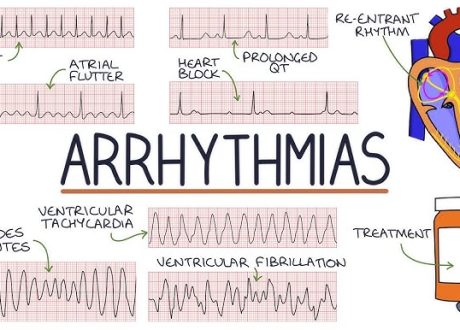Annals of Emergency Medicine, 2021-12-01, Volume 78, Issue 6, Pages 720-721, Copyright © 2021 American College of Emergency Physicians
Opposing authors provide succinct, authoritative discussions of controversial issues in emergency medicine. Authors are provided the opportunity to review and comment on opposing presentations. Each topic is accompanied by an Editor’s Note that summarizes important concepts. Participation as at authoritative discussant is by invitation only, but suggestions for topics and potential authors can be submitted to the section editors.
Rapid sequence intubation entails the simultaneous administration of induction and neuromuscular blocking agents. Peri-intubation hypotension is associated with increased mortality, suggesting that maintaining normal hemodynamics during intubation improves patient safety. Based on the lower risk of hemodynamic deterioration, etomidate should be the default agent for rapid sequence intubation in the emergency department (ED).
Etomidate positively modulates gamma-aminobutyric acid receptor chloride channels, increasing gamma-aminobutyric acid’s inhibitory activity in the central nervous system. At normal induction doses, the drug has no clinically significant direct impact on vascular tone or myocardial activity. Sedation occurs rapidly within 1 minute of intravenous administration and lasts 5 to 10 minutes. Researchers who oppose the use of etomidate frequently cite concerns about the suppression of endogenous catecholamines because of the transient blockade of 11β-hydroxylase, a synthetic enzyme involved in cortisol production. Post hoc analyses of patients intubated for sepsis found an association between etomidate use and increased mortality; however, these findings were confounded by differences in patient acuity. A Cochrane review found an association between bolus-dose etomidate (0.3 mg/kg) and decreased serum cortisol level. However, the authors were unclear about the clinical significance of this effect because they observed that the cortisol levels improve within 12 hours of intubation and that there was no apparent impact on patient-centered outcomes, including mortality.
Ketamine, another candidate default agent for rapid sequence intubation in the ED, has multiple mechanisms of action, including the antagonism of N-methyl-D-aspartate receptors. Ketamine also inhibits catecholamine reuptake, thereby augmenting pulse rate and blood pressure. However, its sedative and analgesic properties can undermine these hemodynamic effects, particularly in catecholamine-depleted patients, potentially precipitating hypotension and shock. Indeed, a study comparing cardiodynamics in rats receiving ketamine versus those receiving etomidate found that the former had significantly lower left ventricular contractility and relaxation. This study suggests that ketamine has myocardial depressant properties that, although obviated by catecholamine release in many settings, can precipitate hemodynamic compromise in critically ill patients with depleted catecholamine reserves.
Of course, animal data are only as compelling as they are generalizable to human subjects. Jabre et al randomized 655 patients requiring sedation for emergency intubation in out-of-hospital, ED, and ICU settings to receive either 0.3 mg/kg of etomidate or 2 mg/kg of ketamine. The trial found no differences with regard to intubating conditions, 28-day mortality, or the length of hospitalization. A second retrospective study compared outcomes among 968 adult patients with trauma undergoing rapid sequence intubation in the ED before and after an institutional protocol switch from etomidate to ketamine as the standard induction agent. This study found no benefit in terms of inhospital mortality between patients receiving ketamine (20.4%) versus those receiving etomidate (17.3%).
Given the equipoise detected by the randomized studies, any difference in the outcomes of rapid sequence intubations in the ED using these agents is likely to be subtle. Consequently, the detection of differences will require larger study samples. Two studies from the National Emergency Airway Registry, a research network of 25 EDs throughout North America, offer insights into the comparison of these agents. Although these studies are observational and thus susceptible to unmeasured confounding, their strengths lie in the quantity of observations.
The first study examined 531 patients in whom the intubating providers reported suspicion for sepsis. The incidence of postprocedure hypotension, defined as a systolic blood pressure of <100 mm Hg, was higher among patients receiving ketamine versus those receiving etomidate even with a propensity score-adjusted analysis to control for measured confounders (odds ratio 2.7, 95% confidence interval 1.1 to 6.7). Rather than focusing on the most critically ill patients, the second study examined patients without preintubation hypotension (systolic blood pressure<100 mm Hg). More patients receiving ketamine developed peri-intubation hypotension, as determined using logistic regression analyses controlling for similar confounders (odds ratio 1.4, 95% confidence interval 1.2 to 1.7).
These data remain susceptible to confounding despite statistical techniques to minimize this risk. These registry data are also susceptible to an indication bias and cannot exclude the possibility that the providers preferentially selected ketamine for patients who were more hemodynamically tenuous in ways not captured by the study variables. Nevertheless, these large datasets suggest that ketamine carries a higher risk of peri-intubation hemodynamic deterioration. This is of concern, given the association between peri-intubation hypotension and cardiac arrest, although the effect is not sufficiently pronounced to show a direct association between ketamine use and increased mortality. Although both the agents can be used for emergency airway management, the available evidence points toward etomidate as the best agent for induction during rapid sequence intubation. It provides reliable and rapid anesthesia, is familiar to nearly all emergency providers, and based on recent evidence, has a more beneficial cardiostable profile. Until further data suggest otherwise, we contend that etomidate be the default sedative agent for rapid sequence intubation in the ED.










